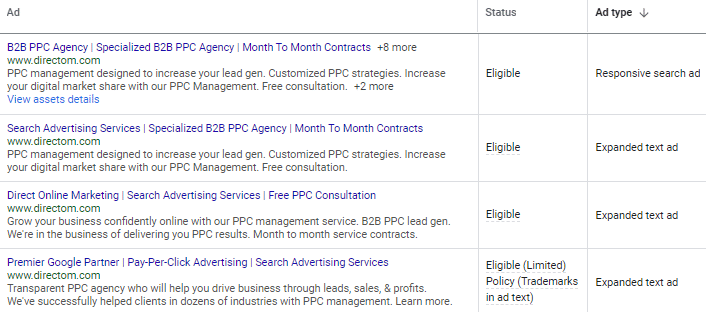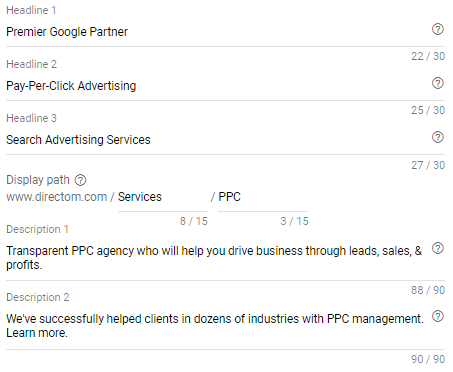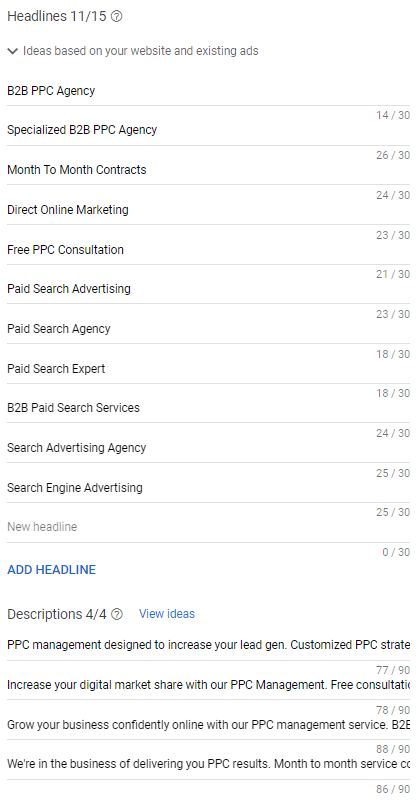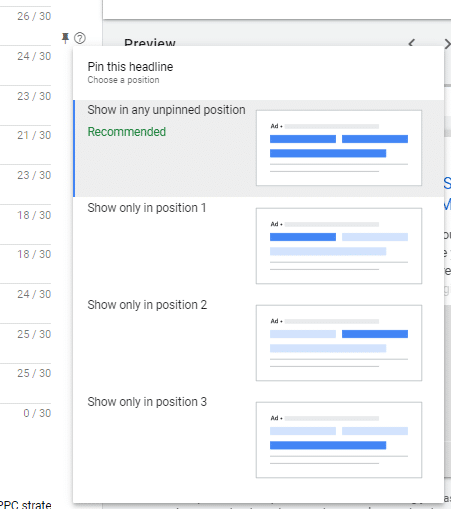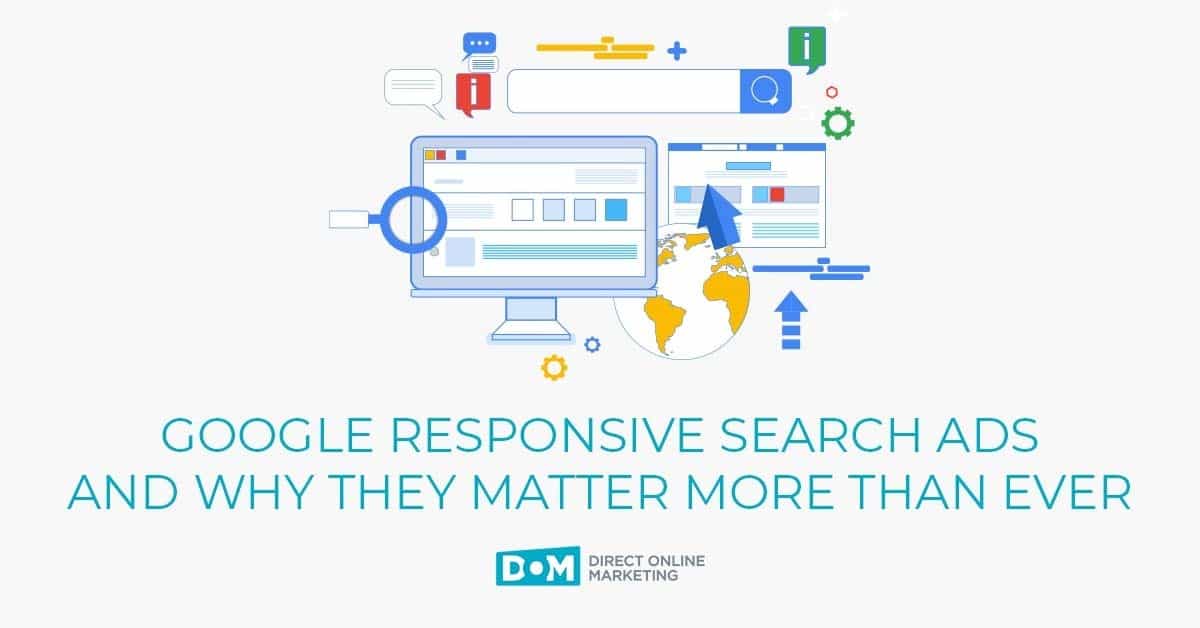
Google announced last year that as of June 30 of this year, Responsive Search Ads (RSAs) will be the primary ad type available in search campaigns. As a result of this change, Expanded Text Ads are being phased out.
That’s right – you’ve got about three weeks (as of this posting) to get your search ads together.
Google claims that this change will be better for advertisers because, according to Google studies, Responsive Search Ads are a high performing alternative to Expanded Text Ads. It also means advertisers will have less control over their ads.
Let’s examine the pros and cons of this change below.
What Exactly Is Changing?
Google has announced that you will no longer be able to create or edit Expanded Text Ads within standard search campaigns after June 30, 2022.
So while you will no longer be able to create them:
- Any Expanded Text Ads that you currently have running (or create before the deadline) will continue to serve.
- You will also maintain the ability to pause and resume Expanded Text Ads.
This change to the platform doesn’t mean your existing ads will stop running. It simply means that Responsive Search Ads will, become the primary ad type available to advertisers in paid search campaigns.
Responsive Search Ads have been available for a few years now. Before this change, it was a best practice at DOM to create ad groups composed of:
- 1 Responsive Search Ad
- 3 Expanded Text Ads
According to internal Google data, “advertisers that switch from expanded text ads to responsive search ads, using the same assets, see an average of 7% more conversions at a similar cost per conversion.”
Emphasis above was added by us for effect.
According to the Google Ads management specialists here at DOM, Responsive Search Ads generally serve more frequently than Expanded Text Ads. Now this doesn’t necessarily mean that Responsive Search Ads always perform better, but it does mean that Google prefers to show Responsive Search Ads more.
Therefore, it is best to go with the flow and use the ad type that Google puts in front of people more frequently.
What Is an Expanded Text Ad (ETA) compared to a Responsive Search Ad (RSA)?
To users, these two search ad types look the same when encountered online:
It’s under the hood, on the advertiser’s end, that ETAs and RSAs differ.
Here’s the space you’ve got to work with for each ad type:
Expanded Text Ads
- 3 headlines
- 30 characters max/headline
- 2 descriptions
- 90 characters max/description
Responsive Search Ads
- 15 headlines
- 30 characters max/headline
- 4 descriptions
- 90 characters max/description
ETAs let you define 3 headlines and 2 descriptions, arranged in the order you choose.
RSAs let you define up to 15 headlines and 4 descriptions, which Google then takes and mixes & matches to create the specific combination of headlines and descriptions that appear in any given instance of your ad showing to a user.
Another differentiator with RSAs is the presence of the Ad Strength progress tracker.
This tracker helps you understand what other additions and features you need to include in your RSAs to maximize the likelihood of its visibility. For instance, if you were not using any ads extensions, this tool would tell you and provide you with some ideas on extensions to use.
Over time, Google’s machine learning algorithm will determine which ad combinations produce the best results for your campaign, and tailor your copy to achieve your desired results.
Pinning
Within RSAs, you can pin headlines and descriptions to a certain position. That is, you can instruct Google to show a line of text in only the position within the ad that you choose.
So if you have a headline that you always want out front & center in your ads, you can pin that headline to show only in position 1 for instance.
Same goes for your descriptions.
Pros and Cons of the End of Expanded Text Ads and the Rise of Responsive Search Ads
Con: Loss of Control
It will be harder to control what precise message users see in your ads.
The responsive nature of RSAs means that the Google algorithm will cycle through multiple headlines and descriptions to show in a given instance of your ad appearing on a SERP. You won’t know for certain what combination of text a user will be served.
Just for the sake of confirmation, it’s worth noting that this “loss of control” is specifically tailored to your ad variations and NOT the search queries you are targeting your ads to be shown for.
With ETAs, you control the singular message that your ad will always display. You write the 3 headlines and 2 descriptions, and you put them in the order you want; that’s how ETAs work.
It will be harder to A/B test the effectiveness of one message against another.
Because RTAs present a rotating combination of your headlines and descriptions, it won’t be possible to run a strict test of one ad message against another. ETAs, on the other hand, do allow for this kind of precise testing.
At DOM, we continually A/B test ad messages for our clients with ETAs. It’s a best practice of ours to disseminate well-performing messages across ads and campaigns; conversely, we swap out poor-performers and put in new messages to continue our testing.
Pro: Easier Account Management
Creating ad groups composed of a single RSA rather than multiple ETAs does make things easier in some ways.
You can spend less time creating ad groups.
Right off the bat, you only have to create one ad rather than a bunch to communicate many messages.
And you can consider adding suggestions straight from Google for more headlines and descriptions.
You can let Google do the A/B testing.
(If you’re feeling ambitious, even after June 2022 you can still A/B test one RSA against another. You’d need to provide each of the 2 RSAs a different set of headlines and descriptions, one set for the test group and one set for the control group. [And perhaps perform some prodigious pinning to make select elements static.])
If you don’t have the time to set up A/B tests of one ad against another, you can just let Google rotate through a bunch of messages and optimize your ad. The algorithm will optimize your RSA by trying to present the most enticing of your headlines and descriptions to each user, based on that user’s search history and what they’ve typed into the Google search bar.
What Does This Change To Responsive Search Ads Mean for You?
Simplified Account Management
If you don’t have the time, inclination, or people to run your own A/B tests of ad messaging, then RSAs are a boon. You can give Google some headlines and descriptions, and then sit back and relax while the algorithm tries to sort out what’s the best-performing ad copy.
Less Control
If you like to craft a precise message and deliver it to potential customers verbatim, RSAs are a bane. You’re going to have to put in more effort to present a consistent message; you’re going to have to dig into technical settings like pinning to make your ad more static.
Going with the Flow
Whether we like it or not, Google will continue to change the details of paid search advertising. Its nature is staying the same, however. At the end of the day, you still need to craft a message that compels your audience to take action. This upcoming (June 2022) adjustment by Google doesn’t change that fact.
So take the leap and embrace Responsive Search Ads. This is an ad type that Google is already favoring over Expanded Text Ads (as our experience at DOM shows us).
To get more information on this topic, check out Google’s documentation.
Here are a few more articles from the DOM blog about digital advertising that might interest you, too:
- Will AI Copywriting Replace Content Writers?
- Zero-click Searches and the Future of SEM
- How Online Marketing Helps Global Exporters Grow
- What Is a Call to Action? (Click Here to Find Out)
Unsure whether or not your campaigns are prepared for the expiration of expanded text ads? Contact us today for a free PPC consultation.
